Hi All,
Last time we talked about how COVID-19 operates and about the stages or progression of the illness. If you missed that post click here for a review. Today we are discussing herbal strategies for the prevention of COVID-19 from an herbalists perspective.
As a quick review, according to medical reports coming out of china there are 6 progressive stages to this illness that need to be addressed. Thankfully not everyone will progress to the more sever stages. Remember, treatment strategies are likely to change as the virus moves forward. From an herbalists perspective, we always look at what is presenting in the moment, each persons history, medications etc. Because each person is different, the recommendations outlined here may not be suitable for everyone. Always take your own circumstances into account.
Stages of COVID-19 progression
- Prevention
- Clinical Observation Stage
- Early Stage
- Closing the lungs
- Sever period – lungs closed in and out
- Recovery
Prevention strategies
Holistically speaking, we want to take a multi-level approach to the prevention of any disease, including COVID-19. First focusing on a healthy lifestyle including diet, community and movement. Herbs may also be useful addition to a prevention strategy with the goal of strengthening our natural defenses.
Our overall strategy may include,
- Reinforcing the skin and toning mucus membranes.
- Supporting the immune system.
- Eat Healthy warming foods.
- Get out into the sunshine.
- Enjoy some exercise to keep the lymph moving and working well.
Strengthening the Skin and Mucus Membranes.
Our skin and mucus membranes are collectively referred to as epithelial tissues. Skin is the body’s largest organ covering the entire outside of our physical structure. Its job is to protect our insides from the elements. Mucus membranes are our internal skin. These are specialized epithelial cells that line internal passageways, tubes and orifices from the mouth to the anus. Epithelial tissues are the body’s first line of defense from physical and environmental damage. They protect us against dirt, chemicals, and pathogens of all kinds including bacterial and viral. Skin and mucus membranes control what substances are absorbed, the rate of absorption and what is rejected. All substances that enter the body must cross epithelium tissue.
The Corona virus attaches itself to the mucus membranes of the respiratory system including the nasal passages, throat and lungs. But this, or any virus, may enter the body through any entry point through epithelial tissue. When we strengthen our skin and mucus membranes, we increase our primary immune capability, by making entry more difficult.
We strengthen our epithelial tissues through
- Foods
- Nutrients
- Herbs
Foods and nutrients that improve skin and mucosal health
A healthy whole foods diet improves the density and flexibility of our skin. Good nutrition causes the cellular junctions and bindings of epithelial tissue to tighten or close ranks. You may have read about this in terms of leaky gut syndrome. The same junctures are present in all the skin and mucosal cells.
Foods and nutrients that enrich, protect and strengthen the skin also vitalize connective tissues. These foods are high in vitamin C, Zinc, vitamin A, Vitamin B and healthy fats. And may include fatty fish, avocados, dark purple grapes, bone broth, green leafy vegetables, Fresh fruits, vegetables, legumes, and whole grains.
Healthy Fats
Foods that contain essential fatty acids support connective tissue and the mucous membranes. These foods may include fatty fish, fax seeds, pumpkin seeds, black currants, walnuts, almonds and coconut oil.
Probiotics
Don’t forget the probiotics. The gut is an important component in the prevention of any disease. A large portion of lymph tissue is in the gut. Lymph tissue is an active part of our immune system. Around here we drink homemade kombucha. Kombucha is a sour food (described below) and gives us trillions of naturally occurring colony forming units (CFU) of probiotic microbes. If you buy your probiotics make sure they have over 50 billion CFUs. Look for as many different probiotic types as possible.
Sour foods
Sour Fruits like apples, lemons, limes, raspberries, blackberries and more, protect mucus membranes. They add vitamin C to the diet, and prevent the build up of fluids associated with this illness. The sour flavor also helps ease a queasy or sour stomach. The saying “an apple a day keeps the doctor away” may have some validity here.
Herbs that support the Skin and Mucous Membranes
Before we get into herbs that tighten the linkages in the skin and support mucosal tissue, I want to talk a little about herbal energetics for the preventative phase.
Overall, when working with COVID-19 we want to use warming and drying herbs. But, at this stage the virus is not present. So, we don’t need to limit ourselves to the herbs we’ll want in a more active phase of the disease. When and if the virus becomes apparent, you’ll will want to stop taking preventative herbs and move to more active interventions. There has been a lot of well-intended misinformation about the use of herbs in relation to COVID-19. Please understand that as herbalists we always take each person and their personal circumstances into view. An herb that may be “good” or “appropriate” at this stage may be “bad” or “inappropriate” as we continue.
Supporting the Mucus membranes, connective tissue and the skin with herbs
Horsetail (Equisetum arvense)
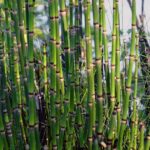
Horsetail contains high amounts of easily to assimilate collagen. Our skin and connective tissues are made up of about 75% collagen. Good healthy collagen makes our skin and mucus membranes supple and soft. Collagen also tightens the cellular joints and bindings making the skin stronger. That means our skin is better able to do its job of keeping out what doesn’t need to go in. Horsetail is best used in formula and can be used as a tea, infused oil, or a tincture.
Marshmallow Root (Althaea Officinalis)
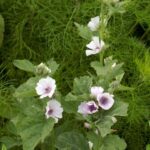
Most of the plants in the mallow family are classic mucosal vulneraries. They contain a slimy substance called mucilage that works to support, heal and protect mucus membranes throughout the body. Other herbs in the mallow family include Hollyhock Alcea rosea (I like the flowers best), Common Mallow Malva neglecta, Scarlet Globemallow Sphaeralcea coccinea and others. There’s a good chance you have a mallow family plant in your yard that you think of as a weed. Marshmallow root (along with any of the mallows) can be taken as a tea or a tincture.
Usnea spp
Herbalist and author Kiva Rose puts it beautifully. “The Usnea are their own delicate medicinal miracles. They have a special affinity for re-balancing bacteria and eradicating infection throughout the mucus membranes, from mouth to lungs to gut to urinary tract. This medicine is a special gift for those with signs of infection in the lungs and bronchial area.”
I like Usnea best as a tincture for the protection of mucus membranes. Its energy is cooling and drying. Usnea works best in formula.
Red root (Ceanothus spp)
Red Root strengthens the endothelial barrier and supports the lungs, liver and lymph tissue. It is specifically indicated for inflammation of the mucus membranes in the mouth, throat, tonsils, sinuses and middle ear. This is good because COVID usually starts in the upper respiratory system (above the neck). Red Root is useful when there is acute bronchitis and difficulty breathing or if there is wheezing. A handy herb to use throughout. Use it as a decoction, tea or tincture.
Astringent herbs and COVID-19 prevention
Adding astringent herbs into the tea or formula will help keep our tissues tight, reduce fluid buildup and keep things moving. One of the main principles of the corona virus is dampness in the lungs. We want to do all we can to discourage the build up of fluids from the get-go. As herbalists we do this by supporting the organs and systems that keep things flowing. Rather than seeking to “kill” something, we vitalize our system, creating an environment where the virus cannot thrive.
Violet flower (Viola tricolor)
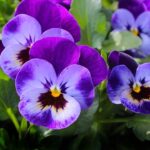
Violets or viola are also called Johnny Jump Ups and Hearts Ease. Both the wild and garden varieties can be used. Violets are wonderful. They lighten and open the heart. While clearing toxins from the lungs, liver, and circulatory system. They are lightly astringent and contain mucilage. Violets have an affinity for the lymph system and mucus membranes. Plus, they help decrease symptoms of a sore throat and fever. This is one of my favorites herbs. Violets can be eaten fresh, taken in tea or as a tincture. I make a yummy elixir with garden grown violets, brandy and honey.
Red Raspberry (Rubus idaus)
Red Raspberry leaves are usually thought of in terms of the reproductive system. However, it may be the perfect choice when we’re looking for a gentle astringent with an affinity to the mucous membranes and the skin. Raspberry leaves are supper nutritious, and are rich in B vitamins, vitamin C, A, and E. Red Raspberry is an antioxidant and provides many essential minerals, including potassium, magnesium, zinc, phosphorus and iron. All of this and its easily available in most grocery stores as Raspberry leaf tea. A long-steeped tea or infusion is the best way to take this herb. Add 1 tea bag per cup of water and let steep for a minimum of 20 minutes.
Hibiscus (Hibiscus sabdariffa)
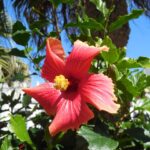
This is the flower that gives Zinger teas their zing. Hibiscus flowers are sour tasting, astringent and diuretic. Its best known for its ability to support heart function and circulation. Yet also helps prevent water retention. Hibiscus supports upper respiratory health and is a metabolic tonic supporting healthy immune function. Hibiscus is easily purchased at the grocery store as any of your favorite Zinger or Hibiscus tea blends. I like to use the tea but also make a tincture to use in formula.
White oak bark (Quercus alba)
The inner bark of the Oak tree helps dry dampness and heal damaged tissues. Additionally, it can slow or stop both external and internal bleeding. With a high tannin content, Oak bark binds with proteins in the tissues making them less permeable to infection. Oak bark is excellent as a gargle to treat sore throat and tonsillitis. For internal use it’s best used as a cold infusion and as a tincture in formula.
A healthy tea for prevention on Covid-19
A quick and easy tea to support mucus membranes and skin. Take 1 teabag each of your favorite hibiscus flower blend and red raspberry leaf tea. Pour 2 cups of boiling water over both tea bags, cover and let sit for a minimum of 20 minutes. Yum. If you’re feeling a little anxious or would just like an addition to the formula add 5 to 10 drops of violet elixir before drinking.
Strengthen The Immune System
The immune system is a complex network of interacting cells, cell products, and cell-forming tissues that protects the body from pathogens and other foreign substances. The system includes the thymus, spleen, lymph nodes, lymph tissue, stem cells, white blood cells, antibodies, and lymphokines. All these elements work together to identify, neutralize and remove unwanted microorganisms from our body. The immune system is activated once the virus (or other detrimental substance) is in our system.
Herbs to support the immune function
There are several plants that harmonize the immune system. Herbalist call these herbs immune modulators or immune trophorestoratives. Their action is to vitalize the immune system, bringing it to tip top shape. That way anything that makes it through epithelial tissues is quickly dealt with. Hopefully with a positive result. We don’t get sick.
Some of my favorite immuno-modulating herbs are; Elderberry, Astragalus, Pine needles and Hawthorn Berries.
Elderberry (Sambucus nigra)
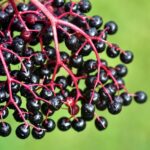
The flowers and berries of the Black Elder or Elderberry bush are both used in herbal medicine. The berries are usually used for Elderberry syrup. Elderberries have an immune modulating action with a cooling, dying and dispersing energy. The also have an affinity for the immune and respiratory systems.
Many people swear by Elderberry to treat and prevent colds and flu. For our purposes, working with COVID-19, Elderberry is appropriate for use as a preventative. This is especially true when mixed with other supportive herbs. Elderberries are antiviral, antioxidant, diaphoretic, refrigerant, laxative, antirheumatic, diuretic, expectorant, anti-catarrhal, and anti-microbial in action.
Some herbalists have recently claimed that Elderberry can cause the white blood cells of the immune system to become over-stimulated. Thus, creating more mucus in an active infection. I have used Elderberry syrup for years. There are times when it no longer helps. When that happens, I switch gears and use Osha, Elecampane or a host of other respiratory herbs. It depends upon the circumstances and what’s going on.
For our purposes I suggest using Elderberries only in the preventative phase as an immune modulator. If an active infection becomes apparent stop using Elderberry and move to other treatment strategies.
Astragalus (Astragalus membranaceas)
This root has comes from Traditional Chinese Medicine (TCM). Astragalus is truly an amazing protective and preventative plant medicine. It’s adaptogen properties help our systems deal with excess stress. Meanwhile its antibacterial, antiviral, diuretic, and immune-stimulating properties protect us from illness. Astragalus protects and strengthens our external defenses from invasion by reinforcing our skin. It can even cause a kind of puffing out of the hairs both outside and inside the body. It is a vasodilator with normalizing activity on the immune, nervous, and hormonal systems. Astragalus also helps prevent kidney and liver damage caused by medication and viruses.
Although Astragalus is an excellent herb to take as a preventative measure It should not be taken during the acute phase of an illness. Once a virus or pathogen has taken hold, the actions of Astragalus can work against us. The very mechanisms it uses to keep things out can hold or trap them in. I like to add Astragalus to elderberry syrup and allergy tea. Astragalus can be taken as a tea, decoction, in a syrup or as a tincture. It tastes good too.
Pine Needles (Pinus spp)
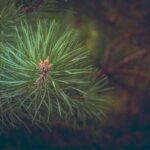
I didn’t think of using pine needles until attending a brief for herbalists presented by the American Herbalist Guild. What a wonderful idea. Pine is warm and stimulating. And its easy to get because it grows just about everywhere. To identify an evergreen as a pine, look closely at how the needles are attached. Needles of pine trees are attached in groups of 2, 3, 4, 5, or more. If there are single needles growing from the shoot or twig, this is probably a spruce or fir tree.
Uses for Pine Needles
Pine needles are antiseptic, expectorant, and tonic. An infusion of pine needles makes an excellent steam inhalant to relieve congestion. Drinking the tea can protect and heal the bladder, urinary tract, and kidneys. The needles and shoots taste nice in a tea and are rich in Vitamin A and C. You can also add an infusion made of the cones and needles to a bath for breathing disorders, skin complaints, and rheumatic pain. Use the EO in an infuser or diluted in an oil for it’s antiseptic, antiviral, bactericidal, deodorant, and diuretic properties.
When you’re out gathering pine needles, be sure to cut off a branch or two for the inner bark while your there. As the disease progresses you will want to switch to the bark if you can. The bark is warmer, dryer and more stimulating than the needles.
Hawthorn (Crataegus spp)
Warm and moving, Hawthorn berries are often used for mild to moderate hypertension caused by stress. However, like most herbs there is more to it than the hype of popular marketing. Hawthorn helps stabilize the flow of fluid in the body, including the blood. It’s useful for stabilizing heart and kidney function, and to keep dampness from building up in the lungs and chest area. It is a relaxing herb that helps you to feel emotionally strong and stable. Something I think we all may need right now. You can take hawthorn in a decoction and as a tincture.
Immune Tonic for COVID-19 Prevention
One possible Immune Tonic for COVID-19 prevention to support the immune system and epithelial tissue 2 parts Elderberries 2 parts Marshmallow Root 1-part Red Root 1-part Echinacea Root 1-part Goji Berries 1-part Astragalus Root 1/2 part American Ginseng 1 part fresh Ginger Root Honey and Distilled Water Put 1-ounce herb in a saucepan with 16 oz of distilled water. Let sit at room temperature for an hour or so. Bring to a boil. Turn the temperature down to a slow simmer, cover the pot and reduce liquid to 8 oz. Remove from heat and let cool. Strain out the herbs. Add 1 cup honey and place in a jar to be kept in the refrigerator. Will keep in the refrigerator for up to 3 months. Take 1 teaspoon to 1 tablespoon per day, depending on your size and energetic health.
This is a preventative formula that should be discontinued if and when the illness becomes acute.
In Summary
Herbs used for the prevention of the corona virus build and protect the skin and mucus membranes. Many have immune modulating and astringent properties.
This is a new virus. Herbalist, like medical professionals, are learning about how to treat COVID. We’re learning more each day. As we learn and work with people, some of the suggested strategies may shift. As always if something doesn’t feel good to don’t do it. Pay attention to what’s going on, how you feel and what symptoms are showing up.
Next, we will discuss the next phase in this illness. The Clinical Observation Stage.
As always feel free to contact me by phone, e-mail or messenger. Or you may click here to send a message. I’m staying off of Facebook and limiting my screen time, to research, writing and working with individual people.
Attached below is a u-tube by my good friend Jacqueline Morasco. Enjoy.
Many blessing and good healthy to you and yours.
Annie
References
This information is based on reports coming out of China and Italy, reports by the CDC, the World Health Organization and the American Herbalist Guild.
I’d like to offer thanks to the many herbal teachers in my life. A lot of the references are from notes received by the herbal teachers in my life including Matthew Wood and Phyllis D light.
http://www.sdcenterforhealth.com/topics/162-nutrition-for-soft-tissue-healing
https://www.herbrally.com/monographs/usnea
https://www.sagewomanherbs.com/white-oak-bark-powder.html
http://www.thegoddesstree.com/trees/Pine.htm
https://www.matthewwoodinstituteofherbalism.com/
Disclaimer
The statements and ideas presented here are not intended to diagnose, treat, cure, or prevent any disease or condition. They have not been evaluated by the FDA. All ideas presented are for the sole purpose of education. To help you take control of your own health. If you have a health concern or condition, consult a physician. Always consult a medical doctor before modifying your diet, using any new product, drug, supplement, or doing any new exercises.
When herbs taken for health purposes, they should be treated with the same care as medicine. Herbal remedies are no substitute for a healthy diet and lifestyle. If you are serious about good health, you’ll want to combine diet, exercise, herbals, a good relationship with your doctor and a generally healthy lifestyle. No one of these will do it alone.
This information is designed to be used as part of a complete health plan. No products are intended to replace your doctor’s care, or to supersede any of his/her advice or prescriptions.

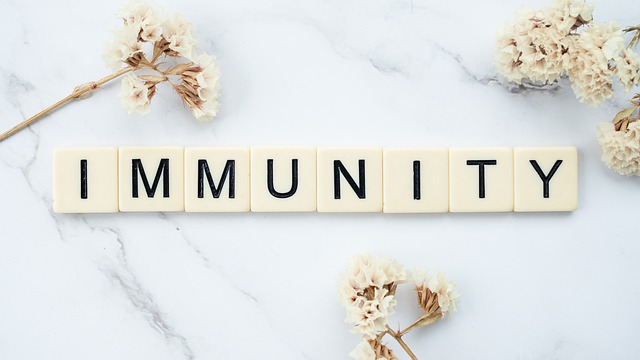
Pingback: COVID-19 Closing of the Lungs - Wonderment Gardens